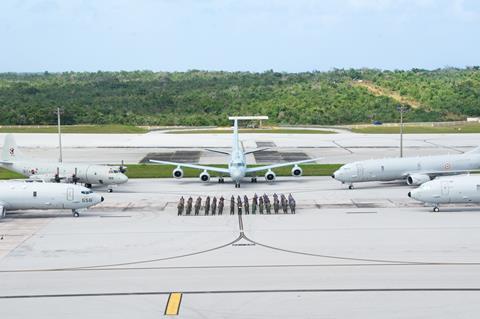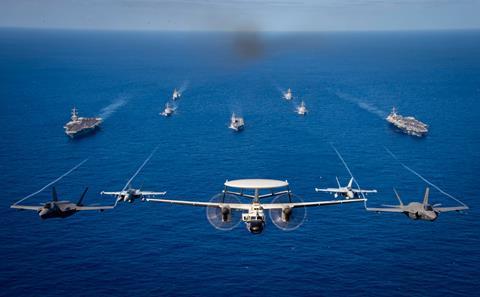Maritime patrol aircraft (MPA) from several Asia-Pacific nations have concluded a major anti-submarine warfare (ASW) exercise, with the Kawasaki P-1 winning a special performance accolade.
Exercise Sea Dragon saw MPA from Australia, India, Japan, South Korea, and the USA operate simulated ASW missions from Anderson AFB on Guam, a US territory in the Pacific Ocean.

Assets included P-8A Poseidons from the Royal Australian Air Force (RAAF) and US Navy (USN), a P-8I Neptune from the Indian navy, a Lockheed Martin P-3CK Orion from the Republic of Korea Navy, and a Kawasaki P-1 from Japan Maritime Self-Defense Force (JMSDF).
The exercise, which commenced on 9 January, saw participants focus on interoperability when dealing with simulated undersea threats. Overall, seven missions were flown, with about 37h logged between the various participants.
The exercise involved identifying, tracking, and targeting both simulated and live submarine targets, leading to a 24h monitoring activity. The effort involved considerable coordination between participants.
“Exercise Sea Dragon is a significant airborne ASW training opportunity, focused on enhancing interoperability and sharing tactical innovation amongst our partners and allies in the region,” says USN Captain Zachary Stang.
“These training exercises help us grow as a dynamic team and deter those who would challenge our goal of maintaining a free and open Indo-Pacific.”
The JMSDF won the “Sea Dragon Championship Belt”, based on the P-1 crew’s ability to drop simulated torpedoes and accuracy. Commenting on the P-1’s performance, a Japanese officer said the aircraft is effective at low altitudes and low speeds.

The Indian navy and RAAF also won prizes.
As the Sea Dragon exercise wrapped up, the USN and JMSDF conducted a series of joint exercises in the Philippine Sea involving two USN aircraft carriers, the USS Carl Vinson and USS Theodore Roosevelt, along with a JMSDF helicopter carrier, the JS Ise.
The exercise included work around air warfare and saw cross-deck flight operations between the vessels.
The USA and its Asia-Pacific allies have stepped up exercises in recent years owing to China’s unprecedented military build-up, which includes the addition of advanced submarines and warships.


























